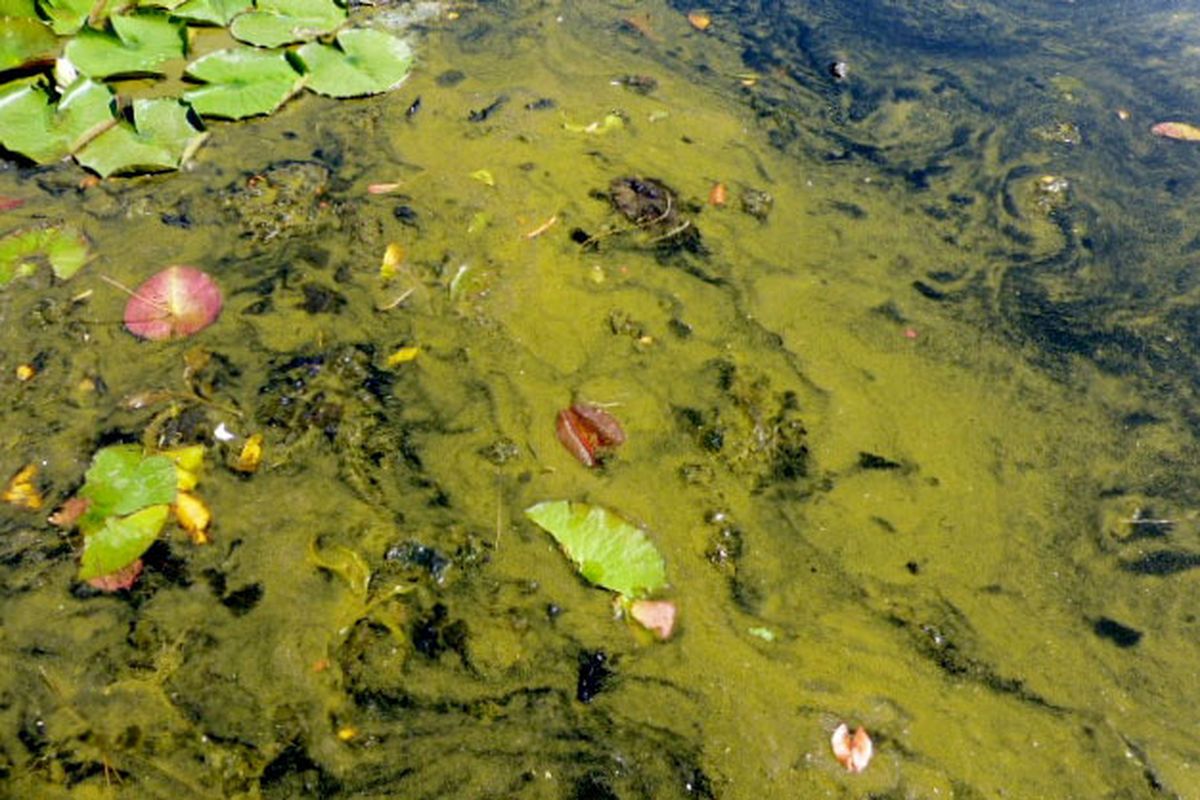UI researchers tracking sources of Fernan Lake algae

Strands of blue-green algae beading Fernan Lake’s shoreline are a common but unwelcome sight to Bill Miller and other residents living near the lake.
The small lake east of Coeur d’Alene is a recreational hub, drawing boaters, water skiers and anglers during the summer.
But for three weeks in July, a Panhandle Health District advisory urged people to stay out of the water after toxic strains of the algae were detected in the lake. Toxins produced by the algae can cause skin rashes and upset stomachs. During some of summer’s hottest days, swimming in the lake was off-limits for Miller’s grandchildren. He kept his dogs out of the water, too.
If this year follows recent patterns, the 381-acre lake will experience at least one more blue-green algae outbreak before the weather turns.
“They seem to be getting more frequent,” said Miller, whose family has owned the house on the lake since the 1970s. “You mess with Mother Nature, and sometimes she’s going to get you.”
This year, the University of Idaho started an intensive monitoring program to track where the nutrients triggering the algae blooms are coming from. The study is part of a larger UI research focus on rapidly urbanizing landscapes and water quality.
“The lake really represents the drain of the landscape – think of a bathtub with a drain at the end,” said Frank Wilhelm, an associate professor in UI’s College of Natural Resources who is leading the research work. “The more disturbed the watershed, the more problems and issues you can expect in the receiving body.”
A recent blue-green algae outbreak in Lake Erie that tainted drinking water in Toledo, Ohio, was tied to fertilizer runoff and sewage treatment plants. But in Fernan Lake’s case, there isn’t a simple answer, Wilhelm said.
This spring, he watched chocolate-brown water rushing through culverts at the east end of Fernan Lake. “It was a huge sediment load,” he said.
The nutrient-rich runoff probably came from a variety of sources: past clear-cuts on Forest Service land above the lake; erosion from a road cut on Fernan Lake Road; and rural residences’ hay fields and pastures.
But it’s a complex picture, Wilhelm said. The lake’s own topography plays a role in the algae blooms, because of a wind pattern that mixes up the water. Nutrients that are released through chemical processes at the lake’s bottom become available to feed algae growth.
Weather is a contributing factor, too, he said. Heavy rains this spring increased the sediment runoff into the lake. Under climate change predictions, rain-on-snow events are expected to increase in the Northwest, which will mean heavier spring sediment flows into lakes, Wilhelm said.
The Fernan Lake monitoring will continue through next spring, and it will take several months of data analysis to draw conclusions, he said.
Funding for the project comes from a $20 million National Science Foundation grant awarded to the University of Idaho, Boise State University and Idaho State University.
The five-year grant is designed to spur research at the universities. UI’s research focus is on how urbanization affects a landscape’s ability to provide amenities such as clean air, clean water and recreation.
The Fernan Lake project was chosen as the kickoff study for that work, said Mark Solomon, a UI water research scientist.
Besides the water quality problems, the lake has an active group of stakeholders who’ve contributed $200,000 in cash and donations to the monitoring work, Solomon said. Donors include the city of Coeur d’Alene, Fernan Lake Village, the Idaho Department of Environmental Quality, individuals and the nonprofit Friends of Fernan.
Miller, the Fernan Lake resident, is part of that effort. On a recent afternoon, he motored graduate student Trea LaCroix across the lake in his pontoon boat.
At the deepest part of the lake, she measured dissolved oxygen levels and water temperature at various depths. She took water quality samples much of the day, starting with the creeks that flow in and out of the lake.
Over time, the detailed sampling – done every two weeks – will provide a record of how nutrients move through Fernan Lake.
“We’re creating a nutrient budget,” Wilhelm said. “We’re establishing how much is coming in, how much is staying in the lake and how much is passing through.”